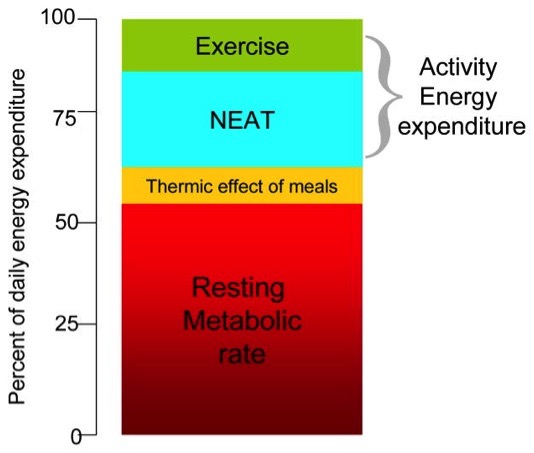Did you know that some foods are harder for your body to digest, thus can help you burn more fat in the long run?
Well, I bet you are dying to know these thermogenic Nigerian foods that would help you burn fat at an alarming rate.
Don’t worry, I will tell you, but before I do, let me quickly share with you some important basic concepts you must understand...
Brief Explanation of Metabolism & thermogenic foods
Think about cars, a big jeep will burn more fuel (energy) compared to a small hatchback.
Like cars, using up a high proportion of calories from the foods we eat for its digestion will mean that less energy is left in the reserve tank for conversion to fat.
Let me introduce you to diet induced thermogenesis A.K.A the thermic food effect (TFE).
Thermogenesis simply means heat creating, it can be diet or exercise induced. The thermic food effect (TFE) is the percentage of energy used for the digestion, absorption, metabolism and storage of foods, heat is then produced.
The hard work it takes to digest foods with a high TFE causes a large percentage of their calories to be burned already. So, instead of storing fat, you will naturally burn fat by incorporating these foods into your diet.
Eating foods with a high TFE might just be the added ammunition you need in your weight loss toolbox.
What exactly is metabolism? Everyone talks about it. “Oh, I can’t lose weight because my metabolism is sooo slow”. If so, can you do anything to make it faster?!
Metabolism is the biochemical reactions happening in your body to convert food to fuel. Your metabolic rate (how fast or slow your metabolism is) is the sum of your Basal Metabolic Rate (BMR), Thermic Food Effect (TFE), Non Exercise Activity Thermogenesis (NEAT) and Exercise Activity Thermogenesis (EAT).
Whaooo! Stay with me! I will explain further, and I promise everything will make sense.
The Basal Metabolic Rate (BMR) is the energy used to stay alive, it covers things like breathing, thinking, pumping blood around the body and so on.
We mostly have no control over this. Age (the older we get the slower it is), gender (slower in women compared to men) and genetic makeup can all affect this. It accounts for 60% of the total energy we use up in a day.
Next is the thermic food effect, as defined above. This accounts for about 10% of the total energy we use up in a day. We have control over this by the food choices we make. Also, people who are obese and have insulin resistance are likely to have lesser TFE.
Now let’s pick up the pace, the last two; non-exercise activity thermogenesis (NEAT) and exercise activity thermogenesis (EAT) accounts for 20 and 10 percent of our daily energy consumption respectively.
NEAT covers any movement that is not exercise, like walking, standing, carrying shopping bags and fidgeting. EAT is any exercise or sports activity. Of course, it goes without saying that we do have control over these.
Weight loss really comes down to a very simple formular. To lose weight, the energy we consume should be less than our total daily energy expenditure (= BMR+TFE+NEAT+EAT).

They are various tools to enhance our total energy cost, and reduce the fuel left in our reserve tank.
Today we are focusing on the TFE part of the equation. I hope that all made sense?? Great!
So, let’s get down to business. What food items and drinks can you add to your Nigerian meals to bump up the TFE?
thermogenic Nigerian foods
Here are the foods that can help turbo charge your metabolism
1. Proteins
I'm sure you can think of many diets that bans or forbids carbs or fats (but hardly proteins)
It is safe to say that protein is always considered a friend and rightly so.
Protein is one macronutrient that keeps on giving!! In addition to keeping you fuller for longer, so you eat less overall and maintaining your muscle mass, you will be pleased to know that proteins also have the highest thermic food effect. They create the most work for your body to break down and turn to fuel.
A staggering 20 – 30% of its energy is used to break it down and turn it into fuel. This compares to a TFE of 5 -10% and 0 – 3% for carbohydrate and fat respectively.
Now you see why we can’t get enough of good old protein. Go for lean and high-quality proteins where possible. Examples: Chicken, turkey, beef, goat, egg, fish, seafood, beans (if vegan), milk, whey and so on.
For more examples, check out this post >> Complete list of Nigerian Protein Rich Foods
2. Scotch bonnet (Ata Rodo)
Chili peppers contain capsaicin, this is responsible for their spiciness. Scotch bonnet is one of the hottest varieties of chilli pepper. Am sure you can feel the heat in your body. The capsaicin boost thermogenesis. They can also act as appetite suppressants, increase thirst (so you will be fuller from water) and make your dishes tasty.
3. Kola-nut
The active ingredient in kola-nut is caffeine. Caffeine is a strong stimulator of the nervous system. It is known to boost metabolism, thermogenesis and aid fat burning. You will find caffeine added to many commercial “fat burning drinks”. Be careful because caffeine can become addictive, and you can get withdrawal symptoms on stopping.
4. Ginger:
Ginger contains compounds called gingerols, which ramps the heat up and stimulates fat break down. If you have ever eaten ginger raw or added it to your drink you will know what I mean. It also has medicinal and anti-inflammatory properties. It is used to soothe sore throat and cold symptoms. In addition, it can bring life to a dull dish by enhancing flavours.
5. Green tea
Green tea contains two important chemicals catechin-polyphenols and caffeine. We have seen above that caffeine increases thermogenesis, but green tea has a combined effect that is higher than caffeine alone. These chemicals work to prolong the stimulation of thermogenesis through another chemical called noradrenaline this in turn boosts fat break down.
6. Carbohydrates high in fibre
Complex carbohydrates especially those high in dietary fibre could boost thermogenesis. Here’s why: it cost more energy to break them down compared to say simple processed carbs. You have the added benefit of a steadier blood sugar level and increased satiety. Where possible consume the skin too to boost fibre content. Complex carbohydrates rich in fibre, vitamins and minerals includes beans, sweet potatoes, cocoyam, ugu leaves, bitter leaf amongst others.
7. Coconut oil
Am sure you did not expect to find any fat-based products in this list considering that their TFE is reported as 0-3%. However, the humble coconut oil is very special. Coconut oil is the best natural source of a type of fat called medium chain triglyceride (MCT). Pure MCT oil has become very popular, especially in the ketogenic community and it is used to make the signature “bulletproof coffee”.
Studies have shown that MCT can boost metabolism and thermogenesis. Unlike other types of fat like long chain triglycerides (LCT), MCT is absorbed and metabolised quickly by the liver to produce energy and therefore less likely to be stored as fat.
Coconut oil is reported to contain about 65% MCT, so it has been suggested that they may have some of the thermogenic effect as pure MCT oil. Coconut oil has a high cooking point, meaning that they do not produce harmful chemicals at high cooking temperatures, making them perfect for frying, cooking, and baking.
A Word of caution!
I must be real with you though, the collective impact of the TFE on your total daily energy expenditure is small. Don’t use this as an excuse to over consume. For example, if you balance and eat a 350kcal chicken that was unnecessary, 20% (70kcal) may be used up as TFE, but the excess 280kcal gets stored and converted to fat. Over time these all add up.
Keep in mind that no one food inherently 'burns fat' it just kicks certain high-energy processes into top gear, this in turn makes your body expend more energy through digestive processes.
The bottom line
There you have it, tapping into the thermic food effect is yet another reason to eat a healthy mix of proteins, quality carbohydrates, and good fats.
In essence, adding these thermogenic foods into your meal plan is a sustainable way to consistently burn more calories. Although small, these seemingly insignificant caloric deficit will compound into huge benefits overtime and enhance your weight loss results.



pls should the fish, egg and sweet potatoes be fried or just boiled
It is better for them to be just boiled.